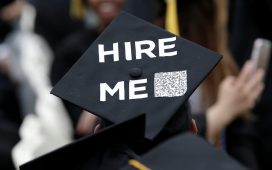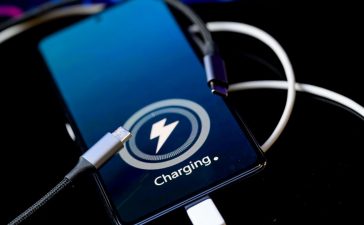Ana Paula Cortes
Courtesy: Ana Paula Cortes
Ana Paula Cortes graduated from New York University in 2021 with her master’s degree in creative writing — and $100,000 in student debt.
Lea este artículo en español aquí.
Cortes, a U.S. citizen who grew up in Mexico, had to finance her degree on her own. She was raised with her two siblings by a single mother, and their finances were strained.
“We were not struggling to have food on the table, but I never had a lot of money,” said Cortes, 29.
More from Personal Finance:
Money market funds vs. high-yield savings accounts
Women will accept much lower salaries than men
Homeowners say 5% is the magic number to move
In October, when the Biden administration turns the $1.7 trillion federal student loan system — dormant for more than three years — back on, millions of people are expected to struggle financially. But the problems may be especially severe and long-lasting among Latino borrowers, who tend to earn less than non-Hispanic whites and fall behind on their loans at a higher rate, consumer advocates say.
“Latinos are likely to delay important financial decisions, like purchasing a home, because of their student loans, which ultimately keeps them in a cycle of debt,” said David Ferreira, senior government affairs manager at the Center for Responsible Lending.
Inequity leads to more loan struggles for Latinos
After she got her undergraduate degree in Mexico, Cortes was urged by her mother to pursue a master’s in the U.S., but she could only finance it on debt.
“I think it’s ridiculous how education in the U.S. is so expensive; it’s ludicrous,” Cortes said.
White non-Hispanic families in the U.S. have a median wealth of $188,200, compared with $36,100 for Hispanic families, according to data analyzed by the Brookings Institution. In 2016, about half of Hispanic families weren’t able to contribute anything to the costs of their children’s higher education, UnidosUS, an advocacy organization, found.
“Most Latinos at institutions of higher education are the first in their families to go to college, and most come from households with lower incomes,” said Elizabeth Zamudio, vice president of education at UnidosUS.
Latinos also tend to take longer to graduate college, often because they’re balancing school with work, experts said. Financial stress and caregiving burdens lead to half of Hispanic students saying it is “very difficult” or “difficult” for them to remain in their post-secondary education program, a recent Gallup poll found.
Overall, Latinos borrow less than their white peers to pay for college, but “they face challenges repaying student loans when they do borrow,” said higher education expert Mark Kantrowitz.
Most Latinos at institutions of higher education are the first in their families to go to college.
Elizabeth Zamudio
vice president of education at UnidosUS
The default rates on student loans for white bachelor’s degree recipients was around 3%, compared with close to 10% for Hispanic college graduates, according to data provided by Kantrowitz.
As of mid-2021, around 40% of Hispanic student borrowers had at some point defaulted on their loan, compared with 29% of white student loan borrowers, according to Pew Trusts.
Latino students not only come from less wealth, but also tend to be paid less than their white peers long after they graduate. The median weekly earnings for white workers is around $1,100, while it’s $850 for Hispanic workers.
Early in the public health crisis, when Hispanics were twice as likely as whites to lose their jobs, Cortes was laid off from her position as a content creator for an app.
It’s been hard for her to find another full-time position in her field. And so for now, she works as a cat sitter to pay her bills.
“You end up so desperate to just get a job because you have so much debt,” Cortes said.









